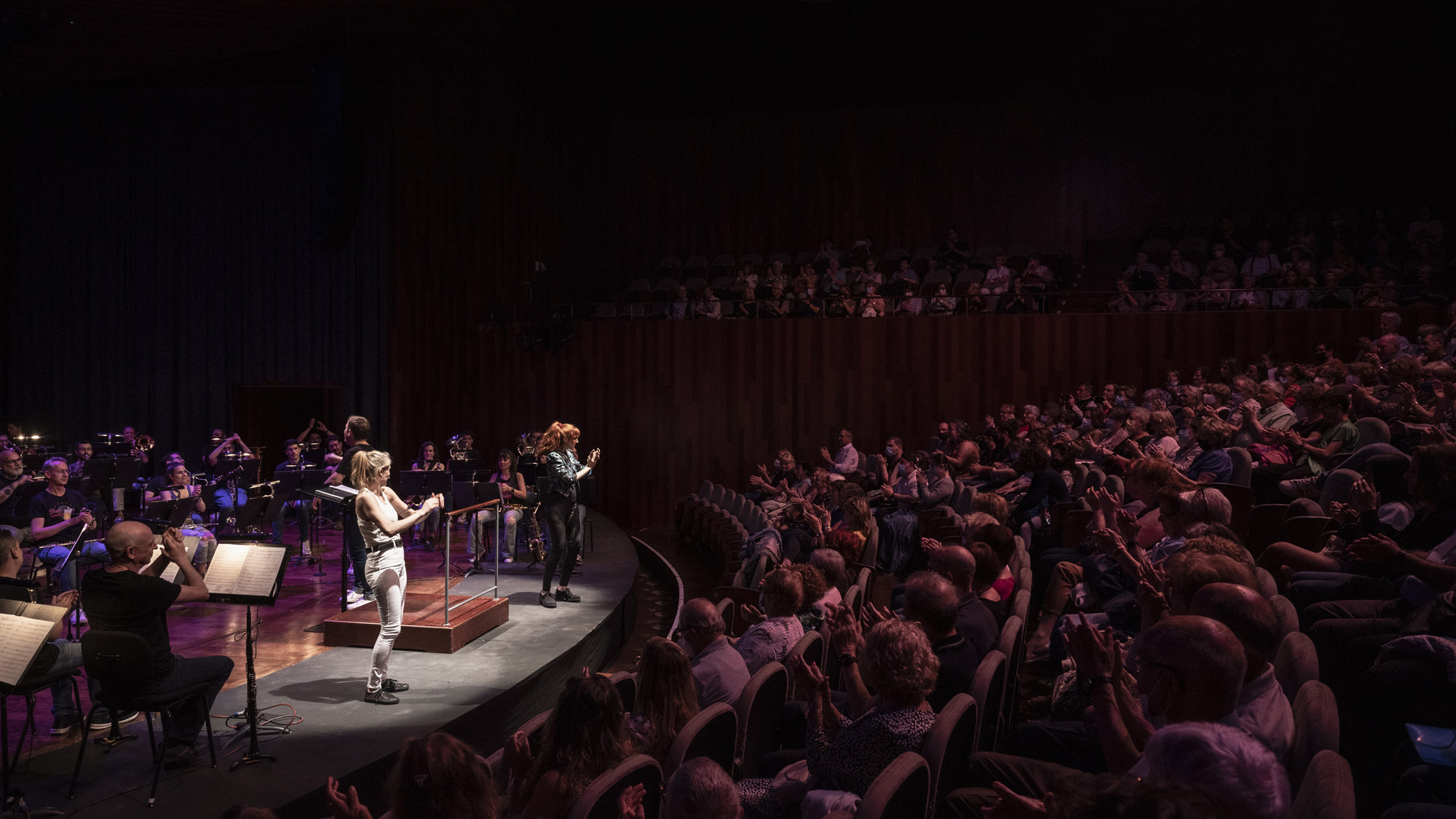repertoire
Gioachino Rossini: The Barber of Seville (Il barbieri de Siviglia). Overture (1816) 7′
Francisco Asenjo Barbieri: The barber of Lavapiés. Selection (1874) 12′
Giacomo Puccini: La Bohème. Suite (1896)
Amadeo Vives: Bohemians. Selection (1904) 11′
Giuseppe Verdi: La Traviata. Prelude (1852) 4′
Ruperto Chapí: La Revoltosa. Prelude (1897) 5′
ARTISTS
Els Pirates Teatre
Barcelona Symphony Band
Rafael Agulló, conductor
Programme
THE SESSIONS FOR THIS CONCERT WILL BE MORE RELAXED. RULES REGARDING NOISE AND MOVEMENT IN THE CONCERT HALL WILL BE MORE RELAXED THAN USUAL, AND SOME MINOR ADJUSTMENTS MAY ALSO BE MADE TO THE LIGHTING, SOUND, ETC. FOR THE WELLBEING OF ALL KINDS OF PUBLIC. THESE TYPES OF SESSIONS ARE FOR INDIVIDUALS AND FAMILIES WHO PREFER A MORE CASUAL ATMOSPHERE, THEREBY REDUCING ANXIETY LEVELS AND MAKING THE EXPERIENCE BETTER FOR EVERYONE (E.G. FAMILIES WITH SMALL CHILDREN, PEOPLE WITH ALZHEIMER’S, PEOPLE WITH AUTISM, ETC.).
The Barcelona Symphonic Band and Els Pirates Teatre present an interesting study of the parallels between opera and zarzuela.
They first compare Gioachino Rossini’s The Barber of Seville and El barberillo de Lavapiés (The Little Barber of Lavapiés) by Francisco Asenjo Barbieri. Barbieri’s zarzuela is an entertaining parody of Rossini’s successful opera: a tangled love story and the pronounced differences between the aristocracy and the lower classes are taken from Seville to Lavapiés, the colourful neighbourhood of Madrid.
They then bring together La bohème by Giacomo Puccini and Bohemios by Amadeo Vives, both of which are based on Henri Murger’s novel Scenes of Bohemian Life and describe the misadventures of a group of young artists in 1840s Paris.
Finally, we have La traviata by Giuseppe Verdi and La revoltosa by Ruperto Chapí, two love stories that focus in particular on the strength of the leading female characters: Violetta and Mari Pepa.

